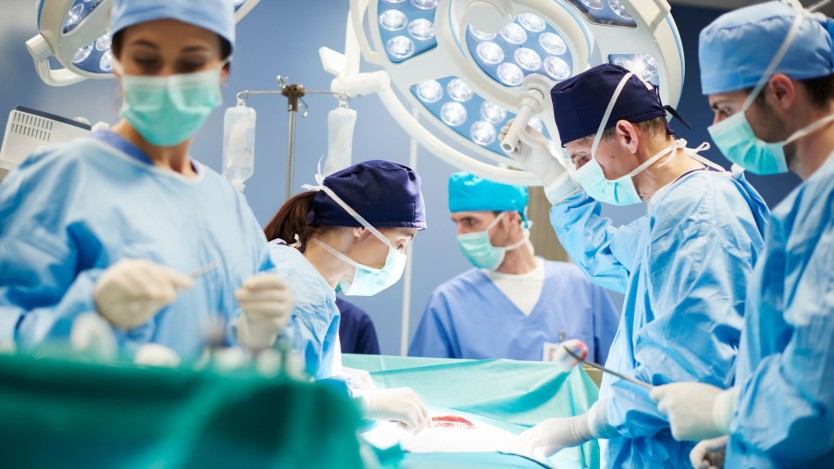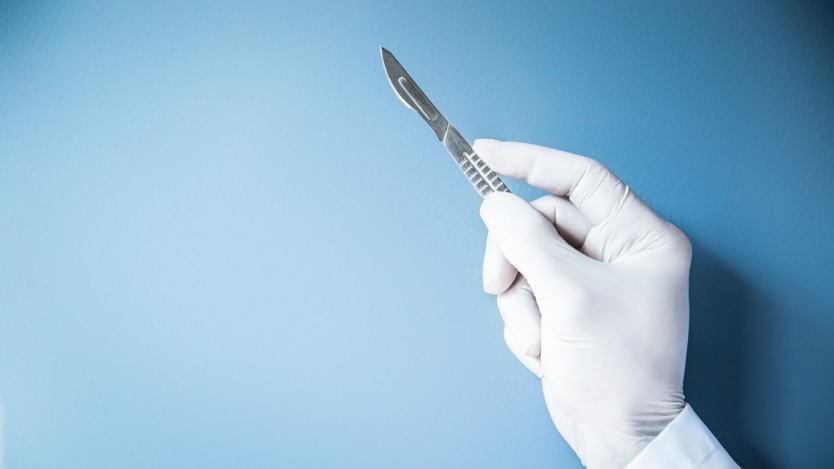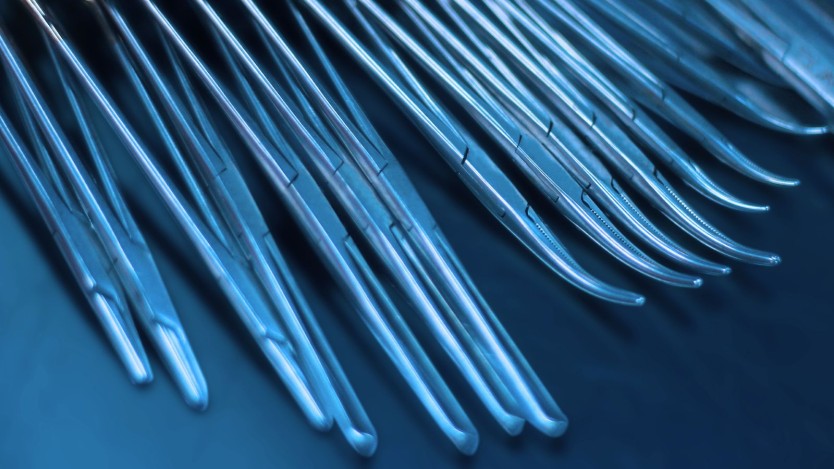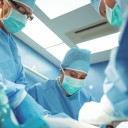5 surgical tools you can't miss in the operating theatre

- What are the essential surgical instruments in an operating theatre?
- The scalpel
- Surgical scissors
- Surgical clamps
- Surgical suture
- Surgical needles
- A surgeon must have the right equipment to be able to perform his work well.
- It is very important to sterilise surgical tools properly to avoid infections.
- Not only are the tools important, it is also necessary that the operating theatre conditions are appropriate in terms of hygiene and lighting.
What are the essential surgical instruments in an operating theatre?
Surgical instruments are usually made of stainless steel, to allow them to be reusable from one patient to another after proper sterilisation. Some tools or parts of tools must be disposable and are usually made of acrylic or materials such as titanium and bakelite. But the most important thing is that whatever instruments are used in the operating theatre, they must be disinfected.
Whatever material they are made of, the tools in an operating theatre must be resistant to any bodily fluids and if they are reusable, they must also be resistant to hygiene and sterilisation processes.
Surgical tools are specifically designed for each requirement during a surgical procedure. There are some that are common to almost all operations and others that are more specific and are only required for specific surgeries.

Free Assessment for Contracting Medical Services
Operarme’s Patient Service will contact you and solve all your questions on the medical service you need.
The scalpel
The scalpel is the star instrument of the operating theatre par excellence. It is a diaeresis instrument, as its function is to cut tissue, and together with the scissors, they are the main diaeresis instruments.
The scalpel must have sharp edges that are capable of cutting and removing tissue, and at the same time it must have a comfortable handle to facilitate the surgeons' work.

The handle of the scalpel is often reusable, made of copper, while the blade is usually disposable and usually made of carbon steel. To change scalpel blades, which are very different from each other due to their shape and size, it is necessary to use a clamp.
There are dozens of types of scalpel blades and types of scalpel handles, which are chosen according to their purpose. The precision required and the area where the incision is to be made are decisive factors in determining which type of blade and which type of handle is best suited to form the scalpel on each occasion.
Surgical scissors
Scissors are another basic instrument for cutting tissue in surgical interventions.
Depending on their specific purpose, they will have different characteristics in terms of their angle, their tips and their general curvature. Depending on their purpose, the length of their handle will also vary.

Depending on the fabric the scissors have to cut, the type of tip, the shape, the sharpness of the blades and the material they are made of will also vary.
Surgical clamps
Surgical clamps are a grasping instrument, as their ultimate purpose is to grasp and move tissues and other surgical instruments during surgery.
Surgical clamps are divided into several parts that vary from one to another depending on their specific application in each case.
The main parts are: the handle, the jaw, the rings and racks, and the locking box. A fundamental part is the jaw, as it is responsible for exerting pressure on the fabric to hold it in place.

The two main types of forceps are the elastic grasping forceps, used to stabilise tissues, and the continuous grasping forceps, used to maintain soft tissues.
Within each of these types there are other more specific subtypes depending on the specific case presented in the operating theatre.
Surgical suture
Sutures are a staple in any operating theatre, as they enable doctors to close the incisions that have been made so that the patient can recover as quickly as possible.
There are two basic types of sutures:
- Absorbable sutures: these are the ones that the human organism assumes and takes care of undoing when they have fulfilled their function. Among them, there are different types of sutures made of different materials, the main distinction being that of natural sutures and synthetic sutures.
- Non-absorbable sutures: these are sutures that must be removed by a medical specialist once they have fulfilled their function of joining the tissues. In this case, as well as differentiating between natural and synthetic sutures, these can be made of different materials such as silk, linen or polyester.
Sometimes it is necessary to use other alternatives to join tissues that have been sectioned, sometimes using staples, tapes or topical adhesives.

Surgical needles
Surgical needles are instruments that usually have a sharp point whose main function is to pierce tissues. Depending on the tissues to be pierced and the purpose, a different needle will be chosen in terms of the type of tip and curvature.
Depending on the purpose of each needle, it is also necessary to choose between reusable needles and disposable needles.

Needles are mainly differentiated according to their tip (triangular or conical, among others) and their curvature (straight or semi-curved, among others).
In addition to the surgical materials, it is also necessary that the operating theatre in which surgical interventions are carried out meets a series of basic sterilisation and lighting conditions. These conditions should enable medical personnel to perform their work as comfortably and effectively as possible.

Free Assessment for Contracting Medical Services
Operarme’s Patient Service will contact you and solve all your questions on the medical service you need.
Medical disclaimer: All the published content in Operarme is intended to disseminate reliable medical information to the general public, and is reviewed by healthcare professionals. In any case should this information be used to perform a diagnosis, indicate a treatment, or replace the medical assessment of a professional in a face to face consultation. Find more information in the links below:
